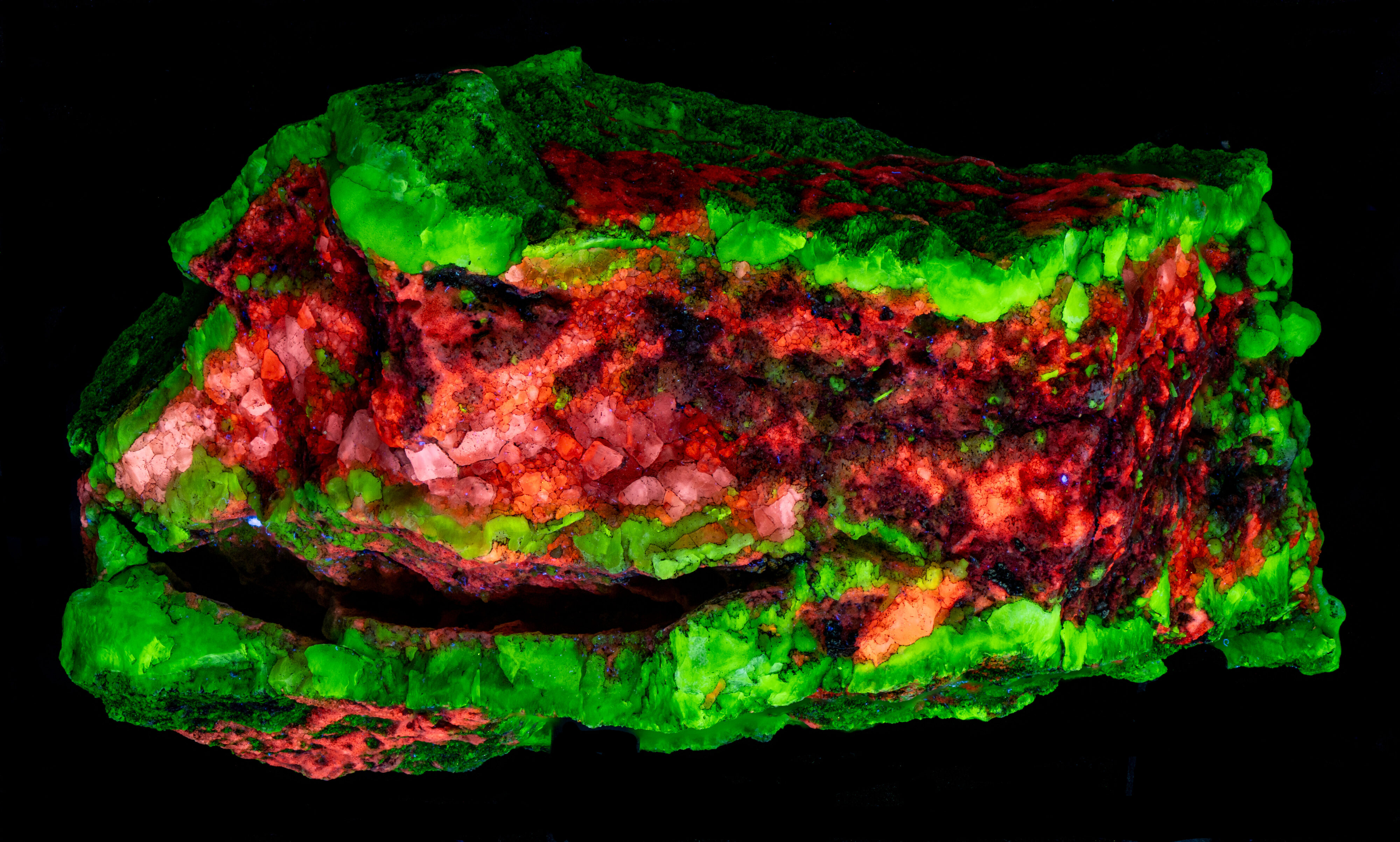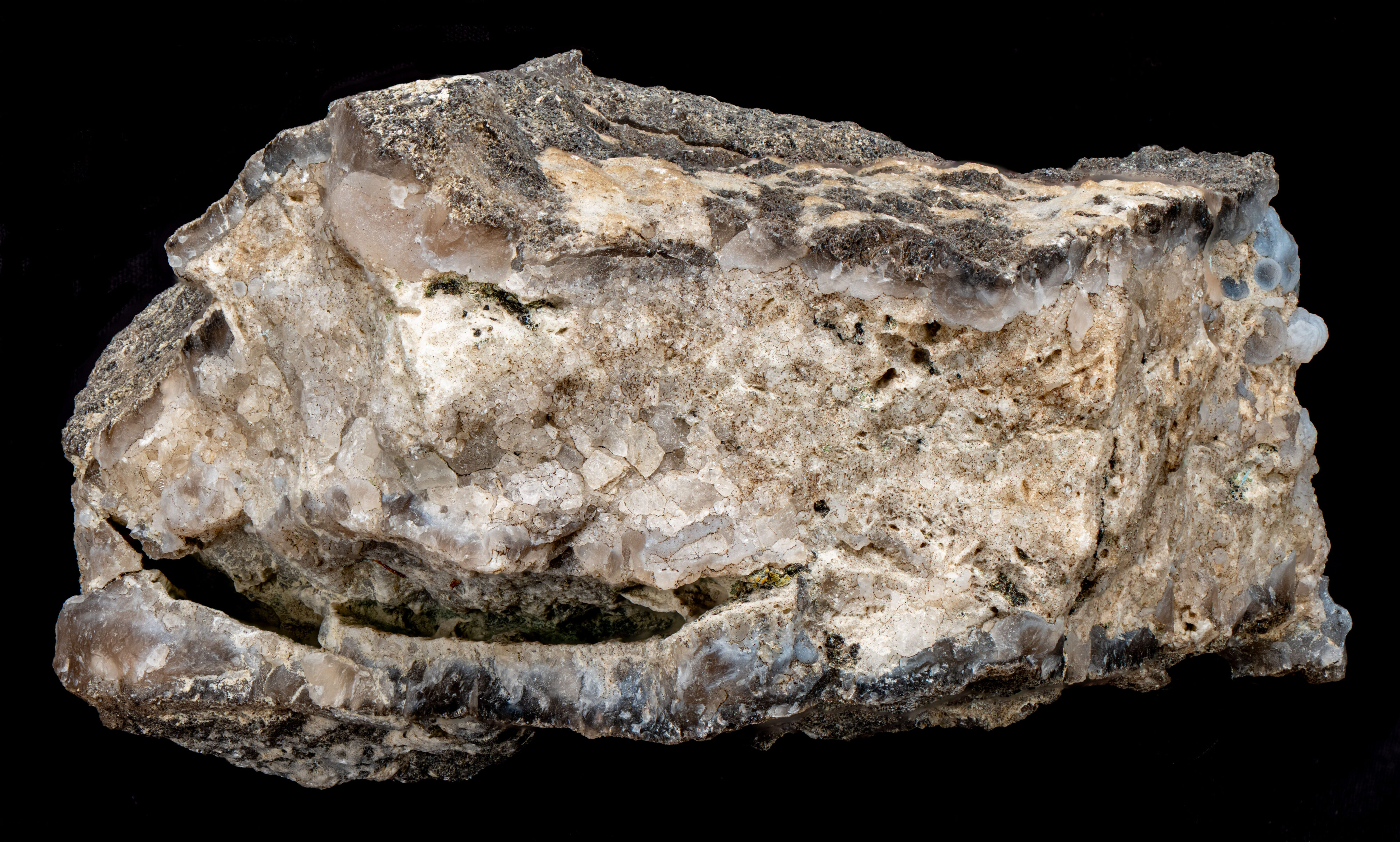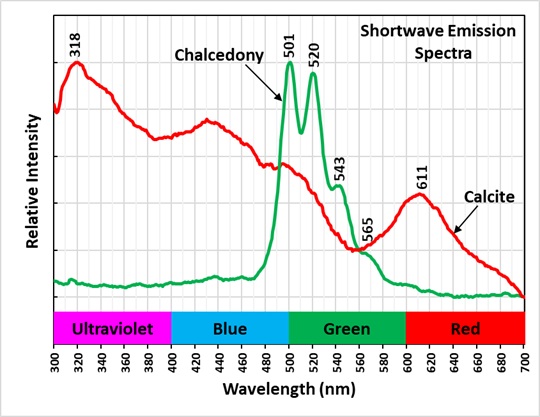Watermelon Rock from Sioux County, Nebraska
Contributed by: Michael Crawford
Date: Oct 2nd, 2025
Locality: Orella, Sioux County, Nebraska, USA (See on Mindat)
Size: 5 x 11 cm
Description:
This is a slab of watermelon rock from Sioux County, Nebraska. Watermelon rock is a brightly fluorescent rock that is composed of a core of red fluorescing calcite sandwiched between two layers of chalcedony that fluoresce bright green. The name for this material comes from its visual resemblance to the red inside and green rind of a watermelon. The specimen is a piece of a 5 cm thick vein that formed in fractures of volcanoclastic claystones and siltstones of the Tertiary White River Group. The silica and uranium that formed the fluorescent chalcedony veins was leached from the surrounding volcanoclastic sediments and deposited along fracture surfaces.
The emission spectrum of the chalcedony shows its fluorescence is activated by the uranyl ion. The spectrum has three sharp peaks at 501 nm, 520 nm and 543 nm. The red calcite fluorescence is activated by manganese and its emission spectrum is a broad peak in the red with a maximum at 611 nm. The spectrum also has a peak in the ultraviolet at 318 nm that is possibly activated by lead.
Summary of luminescence responses:
Chalcedony (Mindat) (RRUFF)
- Fluorescence under Shortwave (255nm LED) UV light: Green
- Fluorescence under Shortwave (255nm LED) UV light: Red



